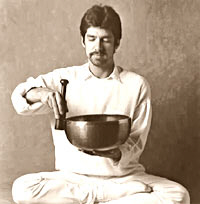Answered by Legionary of Christ Father Edward McNamara, professor of liturgy and dean of theology at the Regina Apostolorum university.
Q: At our parish during Lent, a Buddhist singing bowl is used at the start of Mass in place of the gathering or entrance song. According to one popular resource (Wikipedia), singing bowls are "used as a support for meditation, trance induction and prayer." On the Internet several websites assert that singing bowls provide "positive energy" and provide "beneficial therapy" because their "specific vibrations ... hit our energy bodies" (Sound Bliss). I know that instruments have to come from somewhere, but the background of singing bowls sounds as if it might be introducing a spirituality that is different from Catholicism. So my question is this: Is it appropriate to use a singing bowl or similar instrument in a Catholic Mass? -- A.C., Texas
A: Singing bowls would be, technically speaking, a kind of bell, and, as our reader mentions, are used above all in the Buddhist religious tradition.
Regarding their legitimacy in Christian liturgy we must first recall that introducing new instruments into the liturgy is not left to the whim of musicians or even local pastors. The proper authority for authorizing new instruments is the bishops' conference. No. 393 of the General Instruction of the Roman Missal [GIRM] states:
"Bearing in mind the important place that singing has in a celebration as a necessary or integral part of the Liturgy, all musical settings of the texts for the people's responses and acclamations in the Order of Mass and for special rites that occur in the course of the liturgical year must be submitted to the appropriate office of the Conference of Bishops for review and approval prior to publication. The Conference is likewise to judge which musical forms, melodies, and musical instruments may be admitted in divine worship, provided that these are truly suitable, or can be made suitable, for sacred use."
Perhaps because of the great wealth of Catholic cultural and religious traditions present in the United States, the bishops decided against making a list of approved instruments.
Instruments associated with non-Christian religions would have to be carefully evaluated so as to avoid any danger of interpreting their use in the sense of religious relativism or syncretism. For example, in the case of the singing bowl, in its original context the music has a precise religious function which could well be judged foreign to the nature of Christian prayer.
I do not have enough knowledge to personally affirm that this is the case. But my point is that these questions warrant careful study before any decision is taken.







